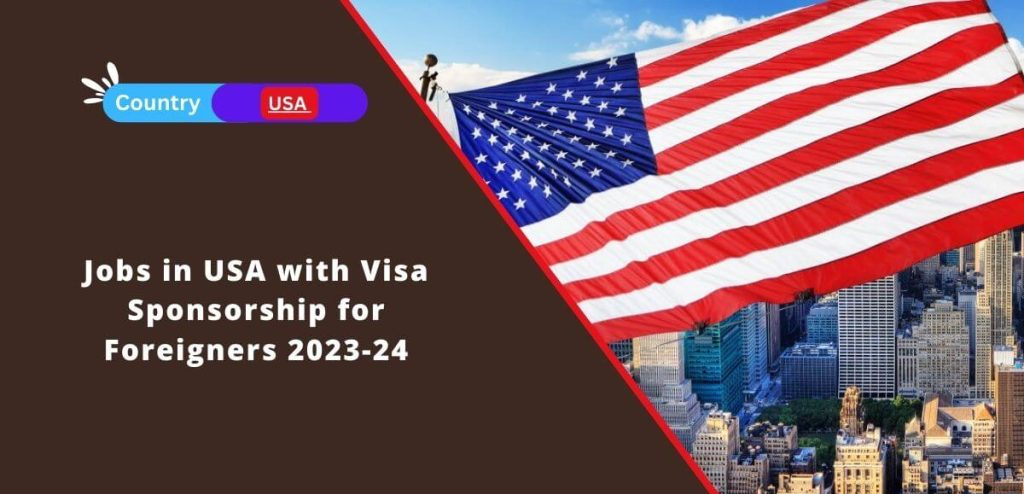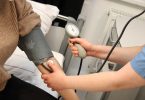Advertisements
Securing free visa jobs in the USA requires careful planning, research, and persistence. Here are some steps to help you in your quest:
- Research Visa Options: Understand the different visa options available for working in the USA. Common options include H-1B visas for specialty occupations, TN visas for professionals from Canada and Mexico, and J-1 visas for exchange visitors.
- Identify Eligible Employers: Look for employers who are willing to sponsor visas for foreign workers. Many tech companies, healthcare institutions, and academic organizations sponsor visas for skilled professionals.
- Build Your Skills and Experience: Enhance your qualifications and experience to make yourself more attractive to employers. Acquire specialized skills and certifications that are in demand in the US job market.
- Networking: Network with professionals in your industry who may be able to provide insights into job opportunities and visa sponsorship. Attend industry events, join online forums, and connect with recruiters on professional networking sites like LinkedIn.
- Job Search: Use online job boards, company websites, and recruitment agencies to search for job openings in your field. Tailor your resume and cover letter to highlight your skills and experience relevant to the position.
- Apply Strategically: Focus your job search on companies that have a history of sponsoring visas for foreign workers. Highlight your eligibility for visa sponsorship in your job applications and interviews.
- Prepare for Interviews: Practice interview questions and be prepared to discuss your visa status and eligibility for sponsorship. Showcase your skills, experience, and enthusiasm for the role and the company.
- Be Patient and Persistent: Securing a job with visa sponsorship can be a lengthy process, so be prepared for some waiting and uncertainty. Stay positive, keep applying, and remain open to opportunities as they arise.
- Consult an Immigration Lawyer: If you’re unsure about the visa process or your eligibility, consider seeking advice from an immigration lawyer who specializes in work visas. They can provide guidance and support throughout the application process.
- Follow Up: After interviews, follow up with employers to express your continued interest in the position and inquire about the status of your application. Maintain regular communication and be proactive in pursuing opportunities.
By following these steps and remaining proactive in your job search, you can increase your chances of securing a free visa job in the USA. Remember to stay informed about visa requirements and regulations, and don’t hesitate to seek professional assistance if needed.
Types of Free Visa Sponsorship
Demand for Skilled Workers
The demand for skilled workers is a fundamental aspect of any thriving economy, and the United States is no exception. Skilled workers are those who possess specialized knowledge, training, or experience in a particular field, making them valuable assets to employers across various industries. The demand for skilled workers in the United States is driven by several factors:
- Economic Growth: As the economy grows and industries expand, the demand for skilled workers increases. Industries such as technology, healthcare, engineering, and finance consistently seek skilled professionals to drive innovation, productivity, and competitiveness.
- Technological Advancements: The rapid pace of technological advancements creates a constant need for skilled workers who can adapt to new tools, software, and processes. Employers seek individuals with expertise in areas such as artificial intelligence, data analysis, cybersecurity, and software development to stay ahead in a competitive market.
- Industry-Specific Needs: Different industries have unique skill requirements based on their nature of operations and growth trajectories. For example, the healthcare sector requires skilled nurses, physicians, and allied health professionals to address the aging population and evolving healthcare needs. Similarly, the construction industry needs skilled tradespeople such as carpenters, electricians, and plumbers to support infrastructure development.
- Global Competition: In an increasingly interconnected world, companies compete on a global scale for talent. The United States attracts skilled workers from around the world, contributing to its diverse workforce and bolstering its competitive edge in innovation and industry leadership.
- Demographic Trends: Demographic shifts, such as an aging workforce and changing labor force participation rates, influence the demand for skilled workers. As older workers retire, there is a need to replace them with skilled professionals who can fill critical roles and drive organizational success.
- Government Policies: Government initiatives, immigration policies, and labor regulations also impact the demand for skilled workers. Programs such as the H-1B visa program, which allows U.S. employers to temporarily employ foreign workers in specialty occupations, reflect the government’s recognition of the need for skilled talent to fill gaps in the domestic labor market.
Overall, the demand for skilled workers in the United States is driven by the dynamic nature of the economy, technological advancements, industry-specific needs, global competition, demographic trends, and government policies. Meeting this demand requires a concerted effort from employers, educational institutions, policymakers, and individuals seeking to develop and leverage their skills in the workforce.
Benefits of Pursuing Free Visa Jobs in the USA
Pursuing free visa jobs in the USA offers numerous benefits for individuals seeking employment opportunities and career growth. Some of the key benefits include:
- Access to a Diverse Job Market: The USA boasts a diverse and dynamic job market with opportunities spanning various industries such as technology, healthcare, finance, engineering, and more. Pursuing free visa jobs allows individuals to explore a wide range of career options and find positions that align with their skills, interests, and professional goals.
- Career Advancement: Many free visa jobs in the USA offer opportunities for career advancement and professional development. Whether through promotions, skill-building programs, or access to specialized training, individuals can advance their careers and achieve their long-term career objectives.
- Competitive Compensation: Jobs in the USA often come with competitive compensation packages, including salaries, bonuses, benefits, and perks. Pursuing free visa jobs allows individuals to access higher-paying opportunities that can lead to financial stability and improved quality of life for themselves and their families.
- Quality Education and Training: The USA is home to some of the world’s top educational institutions and training programs. Pursuing free visa jobs in the USA provides access to quality education and training opportunities that can enhance skills, knowledge, and qualifications, making individuals more competitive in the global job market.
- Cultural Diversity and Exposure: Working in the USA offers the opportunity to experience cultural diversity and exposure to different perspectives, traditions, and lifestyles. Immersing oneself in a multicultural environment can enrich personal and professional experiences, foster cross-cultural understanding, and broaden horizons.
- Networking and Professional Connections: The USA is a hub for networking and professional connections, with numerous industry events, conferences, and networking opportunities available. Pursuing free visa jobs allows individuals to build valuable professional networks, establish connections with industry peers, mentors, and potential employers, and access new career opportunities.
- Personal Growth and Development: Working in the USA can contribute to personal growth and development by challenging individuals to step out of their comfort zones, adapt to new environments, and acquire new skills. The experience of living and working abroad can foster resilience, independence, and personal growth, leading to greater self-confidence and self-awareness.
Overall, pursuing free visa jobs in the USA offers a wealth of opportunities for individuals looking to advance their careers, expand their horizons, and achieve their professional and personal aspirations. From access to diverse job markets and competitive compensation to quality education and cultural exposure, working in the USA can be a rewarding and fulfilling experience for motivated individuals willing to seize the opportunity.
Eligibility and Visa Requirements
To pursue free visa jobs in the USA, individuals must meet certain eligibility criteria and adhere to visa requirements. The eligibility and visa requirements typically depend on the specific visa category under which individuals are applying. Here are some general eligibility criteria and visa requirements individuals may need to fulfill:
- Work Visa Categories: There are various work visa categories available in the USA, each with its own eligibility criteria and requirements. Common work visa categories include H-1B visas for specialty occupations, L-1 visas for intracompany transfers, O-1 visas for individuals with extraordinary abilities, and TN visas for professionals from Canada and Mexico under the NAFTA agreement.
- Employer Sponsorship: Most work visas in the USA require employer sponsorship, meaning individuals must have a job offer from a US employer to apply for the visa. The employer typically needs to file a petition with the United States Citizenship and Immigration Services (USCIS) on behalf of the individual.
- Job Offer and Labor Certification: Individuals must have a valid job offer from a US employer for a position that meets the requirements of the chosen visa category. In some cases, employers may need to obtain labor certification from the Department of Labor to demonstrate that there are no qualified US workers available for the position.
- Educational and Professional Qualifications: Depending on the visa category, individuals may need to meet certain educational and professional qualifications. For example, H-1B visas require individuals to have at least a bachelor’s degree or equivalent work experience in a specialty occupation.
- English Proficiency: Some work visa categories, such as the H-1B visa, may require individuals to demonstrate proficiency in the English language. This requirement is often assessed through standardized tests such as the TOEFL or IELTS.
- Health and Character Requirements: Individuals applying for work visas may need to undergo medical examinations to ensure they meet health requirements. Additionally, they may need to provide police clearance certificates to demonstrate good character and lack of criminal history.
- Documentation and Application Process: Applicants must submit a complete visa application along with supporting documentation, such as passport photos, proof of qualifications, and a valid job offer letter. They may also need to attend an interview at a US embassy or consulate as part of the visa application process.
- Visa Fees and Processing Times: Applicants are required to pay visa application fees and any associated processing fees. Visa processing times vary depending on the visa category and individual circumstances, so applicants should plan accordingly and submit their applications well in advance of their intended travel dates.
Overall, meeting the eligibility criteria and fulfilling the visa requirements is essential for individuals seeking to pursue free visa jobs in the USA. By understanding and adhering to the relevant criteria and requirements, individuals can increase their chances of obtaining a work visa and pursuing employment opportunities in the USA.
Pathways to USA Free Visa Jobs
Securing free visa jobs in the USA involves navigating various pathways and strategies tailored to individual circumstances. While the process can be challenging, understanding the available pathways can significantly increase the likelihood of success. Here are some common pathways to USA free visa jobs:
- Employment-Based Visas: Many individuals secure free visa jobs in the USA through employment-based visas sponsored by US employers. Some popular employment-based visa categories include:
- H-1B Visa: For professionals in specialty occupations.
- L-1 Visa: For intracompany transferees transferring to a US branch, affiliate, or subsidiary.
- O-1 Visa: For individuals with extraordinary ability or achievement in their field.
- TN Visa: For professionals from Canada and Mexico under the NAFTA agreement.
- E-3 Visa: For Australian nationals in specialty occupations.
- Networking and Job Search: Networking with professionals in the industry and actively searching for job openings can lead to opportunities for free visa sponsorship. Building connections with US employers, recruiters, and industry associations can provide insights into available positions and increase visibility to potential employers.
- Internships and Training Programs: Participating in internship programs or training opportunities in the USA can be a pathway to securing free visa jobs. Some organizations offer internship programs that may lead to full-time employment and visa sponsorship for eligible candidates.
- Entrepreneurial Ventures: Entrepreneurs and business owners may explore visa options such as the E-2 Investor Visa or the EB-5 Immigrant Investor Program, which allow individuals to invest in US businesses and obtain visas for themselves and their families.
- Educational Opportunities: Pursuing higher education in the USA can provide avenues for obtaining free visa sponsorship. Some student visas, such as the F-1 Visa for academic studies and the J-1 Visa for exchange programs, offer opportunities for practical training and employment authorization during or after studies.
- Diversity Visa Lottery Program: The Diversity Visa Lottery Program, also known as the Green Card Lottery, provides a limited number of immigrant visas to individuals from countries with low rates of immigration to the USA. Winners of the lottery may be eligible for permanent residency (Green Card) status.
- Specialty Occupations and Shortage Areas: Individuals with skills or expertise in occupations facing shortages in the USA may find opportunities for free visa sponsorship. Some industries, such as healthcare, technology, and engineering, have high demand for skilled professionals and may offer visa sponsorship to fill critical positions.
- Consulting Immigration Professionals: Consulting immigration attorneys or professionals specializing in US visa matters can provide valuable guidance and assistance in navigating the visa application process and identifying suitable pathways to free visa jobs in the USA.
By exploring these pathways and leveraging available resources, individuals can increase their chances of securing free visa jobs in the USA and pursuing rewarding career opportunities in various fields.
Job Search and Application Process
The job search and application process for securing free visa jobs in the USA requires careful planning, research, and execution. Here are some steps to navigate this process effectively:
- Identify Target Industries and Companies: Begin by identifying industries and companies in the USA that align with your skills, experience, and career goals. Research industries with high demand for skilled workers and companies known for sponsoring visas.
- Networking: Build and leverage your professional network to uncover hidden job opportunities and gain insights into potential employers. Attend industry events, networking mixers, and online forums to connect with professionals in your field.
- Job Search Platforms: Utilize online job search platforms, such as LinkedIn, Indeed, Glassdoor, and specialized industry websites, to search for free visa job openings. Customize your search criteria to target companies that sponsor visas and match your qualifications.
- Resume Tailoring: Tailor your resume to highlight relevant skills, experiences, and achievements that demonstrate your value to potential employers. Emphasize any previous international work experience or language proficiency that may be beneficial.
- Cover Letter: Craft a compelling cover letter that introduces yourself, expresses your interest in the position and company, and explains why you are a strong candidate. Use the cover letter to address any visa sponsorship requirements and emphasize your commitment to the role.
- Application Submission: Submit your tailored resume and cover letter through the company’s online application portal or via email, following the application instructions provided. Ensure your application materials are error-free and professional in appearance.
- Follow-Up: After submitting your application, follow up with the hiring manager or recruiter to express your continued interest in the position and inquire about the status of your application. Use this opportunity to reiterate your qualifications and enthusiasm for the role.
- Interview Preparation: Prepare thoroughly for interviews by researching the company, understanding the job requirements, and practicing common interview questions. Be ready to discuss your skills, experiences, and qualifications, as well as your eligibility for visa sponsorship.
- Visa Sponsorship Discussions: During the interview process, be prepared to discuss visa sponsorship requirements and any assistance the company may offer. Clearly communicate your visa status and eligibility for work authorization in the USA.
- Negotiation and Offer Acceptance: If offered the position, carefully review the job offer, including salary, benefits, and visa sponsorship details. Negotiate terms if necessary and ensure that visa sponsorship arrangements are clearly outlined in the employment contract.
By following these steps and remaining proactive in your job search efforts, you can increase your chances of securing free visa jobs in the USA and advancing your career goals in a new environment.
Advertisements
Visa Application and Sponsorship
Once you’ve secured a job offer from a US employer willing to sponsor your visa, the next step is to navigate the visa application and sponsorship process. Here’s what you need to know:
- Identify the Appropriate Visa Category: Determine the most suitable visa category for your employment situation. Common work visa options include the H-1B visa for specialty occupations, the L-1 visa for intracompany transfers, and the O-1 visa for individuals with extraordinary ability or achievement.
- Employer Sponsorship: Your prospective employer will initiate the visa sponsorship process by filing a petition with the United States Citizenship and Immigration Services (USCIS) on your behalf. This petition serves as a request for authorization to employ you in the United States under a specific visa category.
- Labor Certification (if applicable): Depending on the visa category, your employer may need to obtain a labor certification from the Department of Labor (DOL) to demonstrate that there are no qualified US workers available to fill the position.
- Form I-129: The USCIS Form I-129, Petition for a Nonimmigrant Worker, is typically used for visa sponsorship by US employers. Your employer will complete and submit this form along with supporting documentation and the required filing fee to the USCIS.
- Visa Application Process: Once the petition is approved by the USCIS, you can proceed with the visa application process at the nearest US embassy or consulate in your home country. You will need to complete the appropriate visa application forms, pay the visa application fee, and schedule an interview appointment.
- Visa Interview: Attend the visa interview at the US embassy or consulate as scheduled. Be prepared to provide documentation supporting your eligibility for the visa category, including your job offer letter, educational credentials, and any additional required materials.
- Biometric Appointment (if required): Some visa categories may require applicants to undergo biometric fingerprinting as part of the application process. Attend any biometric appointments as scheduled and provide the requested information.
- Medical Examination (if required): Depending on the visa category and your country of origin, you may be required to undergo a medical examination by an authorized physician to ensure you meet the health requirements for entry into the United States.
- Security Clearance (if required): Certain visa categories, particularly those with national security implications, may require applicants to undergo additional security clearance procedures. Cooperate fully with any background checks or investigations as requested.
- Visa Issuance: If your visa application is approved, the US embassy or consulate will issue your visa, typically in the form of a stamp or sticker in your passport. Verify the visa details for accuracy and review any specific terms or conditions of your visa status.
- Travel to the United States: Once you have your visa, you can make plans to travel to the United States to begin your employment. Be sure to familiarize yourself with the terms of your visa status and any requirements for maintaining lawful status while in the country.
Navigating the visa application and sponsorship process can be complex, so it’s essential to work closely with your employer and follow all instructions provided by the USCIS and the US embassy or consulate. With thorough preparation and attention to detail, you can increase your chances of obtaining the necessary visa to pursue employment opportunities in the United States.
Transition to Permanent Residency
Transitioning from a temporary work visa to permanent residency (green card) in the United States is a significant step for individuals seeking to establish long-term roots in the country. Here’s how you can navigate the transition process:
- Understand Eligibility Requirements: Determine your eligibility for permanent residency based on your employment situation, family ties, investment activities, or other qualifying criteria. Common pathways to permanent residency include employment-based immigration categories such as the EB-1, EB-2, and EB-3 preference categories, family-sponsored immigration, the Diversity Visa Lottery program, and investment-based visas like the EB-5 Immigrant Investor Program.
- Priority Date and Visa Bulletin: If you’re applying for permanent residency through an employment-based preference category, your petition will be assigned a priority date, which establishes your place in line for visa processing. Monitor the monthly Visa Bulletin published by the Department of State to track priority date movement and assess when your visa category becomes current.
- File Immigrant Petition: Your employer or sponsor may need to file an immigrant petition on your behalf with the United States Citizenship and Immigration Services (USCIS) if you’re pursuing permanent residency through employment. Family-sponsored immigrants or self-petitioning individuals may also need to file the appropriate immigrant petition form.
- Adjustment of Status or Consular Processing: Depending on your circumstances, you may apply for adjustment of status to permanent residency if you’re already in the United States, or you may undergo consular processing at a US embassy or consulate abroad. Follow the instructions provided by the USCIS or the Department of State for your chosen processing method.
- Provide Supporting Documentation: Prepare and submit the required documentation to support your application for permanent residency. This may include forms, fees, passport-style photographs, medical examination results, police clearance certificates, and other supporting evidence of your eligibility.
- Attend Biometrics Appointment (if required): If you’re applying for adjustment of status within the United States, you may need to attend a biometrics appointment to provide fingerprints, photographs, and signature for identity verification purposes. Follow the instructions provided by the USCIS for scheduling and attending your biometrics appointment.
- Attend Interview (if required): Depending on the specifics of your application, you may be required to attend an interview with USCIS officials to review your eligibility for permanent residency. Prepare thoroughly for the interview and bring any requested documentation or evidence of your qualifications.
- Receive Decision: After reviewing your application and conducting any necessary interviews or background checks, USCIS will make a decision on your application for permanent residency. If approved, you will receive your green card, granting you lawful permanent resident status in the United States.
- Comply with Requirements: Once you obtain permanent residency, ensure that you comply with all requirements for maintaining your status, including residency obligations, employment restrictions, and any other conditions associated with your visa category. Failure to comply with these requirements could jeopardize your permanent resident status.
- Explore Citizenship: After maintaining permanent residency for a certain period of time (usually five years, with some exceptions), you may become eligible to apply for US citizenship through naturalization. Review the eligibility criteria and consider pursuing citizenship if it aligns with your long-term goals.
Navigating the transition from a temporary work visa to permanent residency requires careful planning, attention to detail, and adherence to immigration regulations. Consult with an immigration attorney or qualified immigration professional for personalized guidance tailored to your specific situation.
Overcoming Challenges
Transitioning to permanent residency in the United States can pose several challenges, but with careful planning and perseverance, you can overcome them. Here are some common challenges and strategies for addressing them:
- Legal Complexity: Navigating the US immigration system can be complex and overwhelming. Seek guidance from experienced immigration attorneys or consultants who can provide expert advice and help you understand the process.
- Financial Considerations: The cost of applying for permanent residency, including filing fees, medical exams, and other associated expenses, can be significant. Budget carefully and explore potential sources of financial assistance, such as employer sponsorship or family support.
- Lengthy Processing Times: The process of obtaining permanent residency can be lengthy, with processing times varying depending on your visa category and country of origin. Be patient and monitor your application’s progress regularly, following up with USCIS or the Department of State as needed.
- Language and Cultural Barriers: If English is not your first language, communicating effectively and navigating American culture may present challenges. Consider enrolling in language classes or cultural orientation programs to improve your language skills and adapt to your new environment.
- Employment Restrictions: Some temporary work visas come with restrictions on employment, which can limit your ability to switch employers or pursue certain job opportunities. Research visa options that offer more flexibility and consider upgrading to a visa category that aligns with your long-term career goals.
- Maintaining Status: As a temporary visa holder, it’s crucial to comply with all visa requirements and maintain lawful status while awaiting permanent residency. Stay informed about visa regulations, deadlines, and reporting requirements to avoid falling out of status.
- Family Separation: If you’re relocating to the United States alone, adjusting to life without family members or loved ones can be emotionally challenging. Stay connected with family and friends through regular communication, and seek support from local community groups or social networks.
- Uncertainty and Stress: The uncertainty associated with the immigration process, coupled with the stress of meeting deadlines and fulfilling requirements, can take a toll on your mental well-being. Practice self-care strategies such as exercise, mindfulness, and seeking professional support if needed.
- Adapting to a New Environment: Moving to a new country involves adapting to unfamiliar surroundings, customs, and social norms. Give yourself time to acclimate to your new environment, and be open to learning from others and embracing new experiences.
- Legal and Employment Rights: Educate yourself about your legal rights as an immigrant and understand your rights in the workplace. Familiarize yourself with labor laws, anti-discrimination policies, and resources available to protect your rights and ensure fair treatment.
By proactively addressing these challenges and seeking support when needed, you can successfully navigate the transition to permanent residency in the United States and build a fulfilling life in your new home. Remember to stay focused on your goals, stay informed about your options, and persevere through any obstacles that may arise along the way.
Conclusion
USA free visa jobs present an incredible opportunity for individuals from various backgrounds to fulfill their American aspirations. By gaining a thorough understanding of the job landscape, available visa pathways, and the application procedure, you can kickstart your path to a prosperous career in the United States. The journey to securing employment in the USA without the financial strain of visa costs starts now, offering you the chance to realize your dreams and contribute to the diverse fabric of American society.
Advertisements






